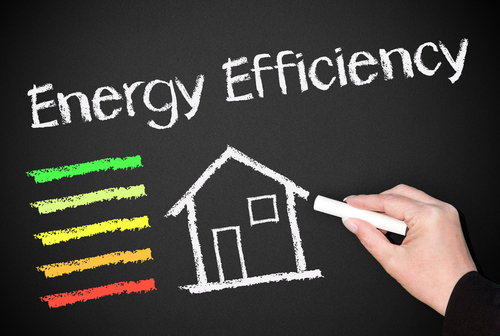Editor’s note: FM Perspectives are industry op-eds. The views expressed are the authors’ and do not necessarily reflect those of Facilities Management Advisor.
Building owners and operators have spent the last decade overwhelmed by an array of challenges ranging from tighter building codes and building performance standards to high interest rates, inflation, and, of course, a global pandemic that devastated office building occupancy rates, left landlords unable to collect from millions of tenants and sent occupant demand for healthier indoor environments and sustainability soaring. So, when President Trump promised to cut red tape for businesses and pull back on regulations for commercial buildings, it is completely understandable that many breathed a sigh of relief. Who could be blamed for wanting a break from all these pressures?

However, rather than viewing building codes and performance standards and the energy efficiency measures other building upgrades required to meet them as yet another hurdle, it’s beneficial to see them as strategic investments that offer substantial returns. In most cases, there may be short-term costs, but the math shows they’ll be beneficial in the long run.
Further, while state and local laws governing efficiency may get more streamlined, they are unlikely to set lower standards. By taking proactive steps toward energy efficiency today, building owners and managers can position themselves to benefit from immediate financial savings, enhanced market competitiveness, and future regulatory compliance.
Building upgrades and energy efficiency measures consistently demonstrate their value through significant long-term savings and return on investment. There’s a long list of small but significant upgrades, like smart thermostats or even planting shade trees, that can reduce energy consumption by as much as 10%, while proper insulation and weatherstripping can save between 10% and 20% on heating and cooling bills annually.
Larger investments yield a better bottom line over time. According to the U.S. Department of Energy, buildings that invest in energy-efficient technologies typically see substantial reductions in energy costs. For instance, heat pumps—a highly efficient heating and cooling solution—can achieve payback periods as short as two years. Solar panel installations typically pay for themselves within seven years, with 18-23 years of profit potential enhanced by programs allowing buildings to sell excess energy back to the grid. Recent studies have demonstrated that efforts to seal existing ductwork leakage, an often-overlooked measure, have yielded annual HVAC energy savings of 15% to 30%. Considering that heating, cooling, and ventilation account for over 50% of a building’s energy consumption, those reductions can represent a significant decrease in monthly utility costs.
One could argue that, if building efficiency investments pay for themselves, local regulations wouldn’t be necessary. The free market would take care of it. Owners and operators would respond to market incentives . . . eventually. Realistically, state and local governments across the country have recognized that proactively implementing policies that encourage or mandate higher building performance and energy efficiency are a win-win for owners, occupants, power infrastructure, and a sustainable future—and they are taking action.
New York City’s Local Law 97, for instance, requires New York’s largest buildings to cut emissions by 40% by 2030, compelling owners and managers to do a thorough exploration of available energy-saving measures. Similarly, California’s Title 24 demands net-zero electricity, and Washington, D.C.’s Building Energy Performance Standards aim for a 50% reduction in building energy use by 2032.
Even traditionally conservative, anti-regulation states are adopting energy efficiency policies. Salt Lake City, Utah, has implemented strict new building energy efficiency and transparency standards. Dallas, Texas’ Comprehensive Environmental and Climate Action Plan mandates energy efficiency retrofits for commercial buildings over 50,000 square feet. Tough new standards are also in place from Louisville, Ky., to Little Rock, Ark., indicating broad recognition of the economic and environmental advantages. Indeed, as the Trump administration pulls away from energy efficiency mandates, many more states and municipalities have indicated they will step into the breach. As such, we are likely to see more state and local ordinances, not less.
For all of these reasons, it is crucial that building owners and operators approach energy efficiency not as a compliance burden but as an opportunity for financial improvement and enhanced building value. Research from ENERGY STAR indicates that energy-efficient buildings command higher market values, experience fewer vacancies, and generate greater revenue than less efficient properties. Further, the Institute for Market Transformation (IMT) notes that energy-efficient buildings can achieve 3-16% higher occupancy rates and rental premiums of up to 10%.
The challenges facing commercial and large-scale residential buildings are real and significant, but energy efficiency should be embraced as a strategic solution rather than resisted as a requirement. In this context, energy efficiency isn’t merely a responsibility, it’s a wise investment in the sustainable and profitable future of any facility.
Ross MacPherson is the residential codes and regulatory affairs manager at climate tech company Aeroseal.

